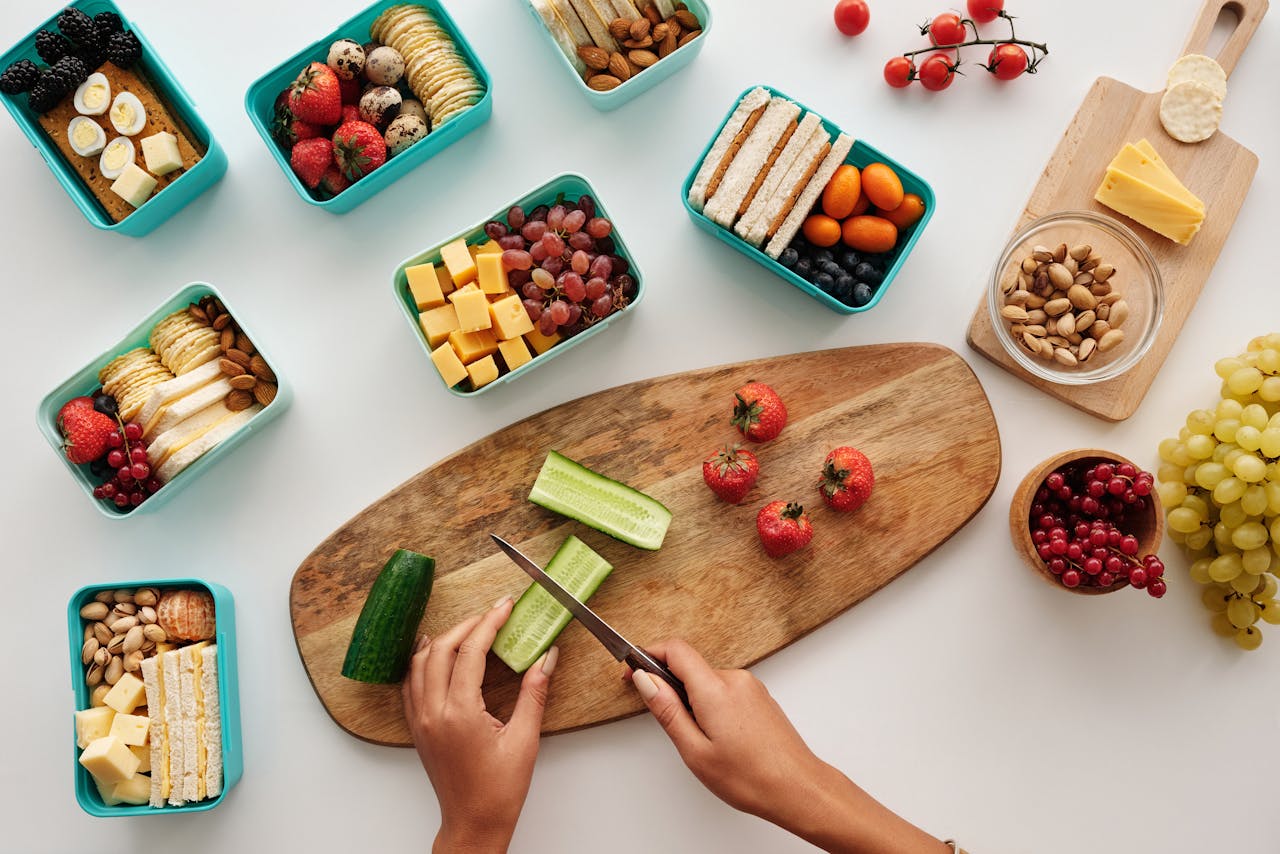Even the best intentions can go awry if you fall into common meal‑planning traps. By recognizing and remedying these pitfalls, you’ll maximize efficiency, minimize waste, and keep your nutrition goals front and center. Here’s how to identify—and avoid—the most frequent mistakes in meal planning.
1. Overly Ambitious Menus
The Issue: Filling your week with complex recipes or too many new dishes can lead to prep fatigue and abandoned plans.
How to Fix:
- Balance Familiar & New: Aim for 60% tried‑and‑true meals and 40% fresh recipes.
- Simplify Technique: Choose recipes requiring five ingredients or fewer, one‑pot cooking, or quick sheet‑pan methods.
- Rotate Favorites: Keep a short list of “always works” meals and slot them in regularly.
2. Ignoring Your Schedule
The Issue: A plan that doesn’t reflect your calendar—late meetings, travel days, or social events—inevitably falls apart.
How to Fix:
- Sync with Your Calendar: Block out days where cooking time is limited and assign easy or no‑prep options.
- Theme Easy Days: On busy weekdays, default to “mason‑jar salads,” “slow‑cooker soups,” or “leftovers night.”
- Reserve Flex Meals: Leave 1–2 open slots each week for takeout, dining out, or spontaneous cooking.
3. One‑Size‑Fits‑All Portions
The Issue: Cooking uniform quantities for every meal can lead to overeating, wasted leftovers, or constant reheating.
How to Fix:
- Portion Precisely: Use kitchen scales, measuring cups, or portion‑control containers—especially when starting a new plan.
- Adjust on the Fly: If dinner portions are too big, repurpose extras into next‑day lunches or freeze for future meals.
- Tailor to Appetite: Map larger meals around high‑activity days and lighter plates on rest days.
4. Skipping Snack Planning
The Issue: Unplanned snacking invites vending‑machine trips or impulse purchases that derail nutrition goals.
How to Fix:
- Include 2–3 Snacks: Carve out snack slots in your weekly grid—think nuts, cut veggies, or yogurt parfaits.
- Prep in Advance: Portion bags of trail mix, energy balls, or hummus‑veggie cups for grab‑and‑go.
- Match Macros: Aim for snacks with a balance of protein (5–10 g), fiber (3–5 g), and healthy fats to sustain energy.
5. Neglecting Ingredient Overlap
The Issue: Buying unique ingredients for each recipe increases costs, clutter, and the risk of spoilage.
How to Fix:
- Cross‑Use Staples: Build meals around versatile items—spinach, eggs, chicken, quinoa—that appear in multiple recipes.
- Create a “Core” List: Identify 5–7 base ingredients to feature each week, then rotate flavorings and add‑ins.
- Plan Repurpose Nights: Turn Sunday’s roast into Tuesday’s salad topping or Wednesday’s wrap filling.
6. Inadequate Prep Time
The Issue: Underestimating how long chopping, cooking, and cleaning will take leads to skipped prep, making weeknight cooking stressful.
How to Fix:
- Time Yourself: Track how long key tasks take once, then build in buffer time for your weekly prep session.
- Use Shortcuts: Pre‑washed greens, frozen vegetables, and pre‑marinated proteins cut prep time dramatically.
- Delegate & Double Up: Cook once, eat twice—batch‑cook grains and proteins, then use them in two different meals.
7. Failing to Audit & Adapt
The Issue: Sticking rigidly to a plan that isn’t working wastes effort and robs you of opportunities to refine your approach.
How to Fix:
- Weekly Review: At week’s end, note which meals were hits, which flopped, and why (taste, time, portion).
- Adjust Recipes & Portions: Double down on crowd-pleasers; simplify or drop unpopular dishes.
- Solicit Feedback: If cooking for others, ask for their input to create a plan everyone loves.
8. Overlooking Storage & Safety
The Issue: Improper cooling, stacking, or labeling can lead to faster spoilage and foodborne illness.
How to Fix:
- Cool Quickly: Portion hot foods into shallow containers to bring them to safe temperatures faster.
- Label Everything: Date and name each container so you rotate oldest items first.
- Follow Guidelines: Store cooked meals in the fridge for no more than 3–4 days; freeze anything beyond that.
Bringing It All Together
Avoiding these common pitfalls will transform meal planning from a daunting chore into a time‑saving, budget‑friendly, and health‑boosting habit. By setting realistic menus, syncing with your life, and continuously refining your process, you’ll cultivate a sustainable system that supports your goals—and makes good eating feel effortless.
